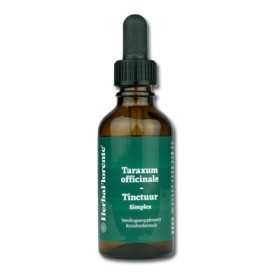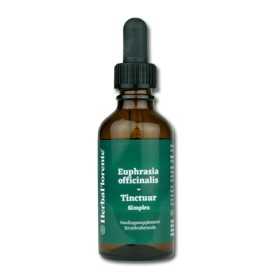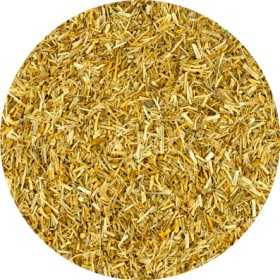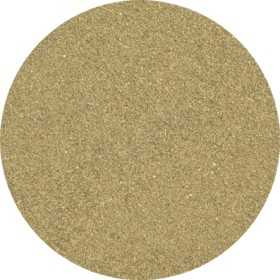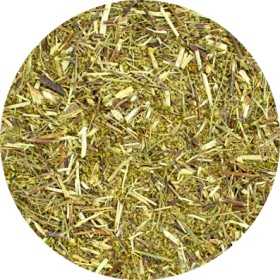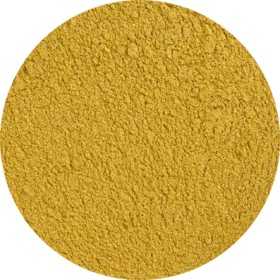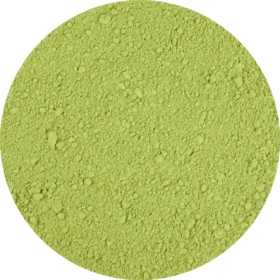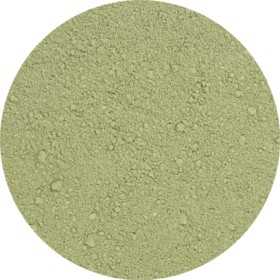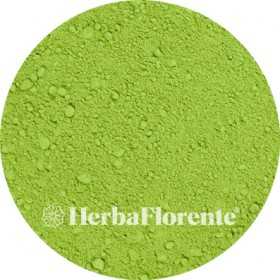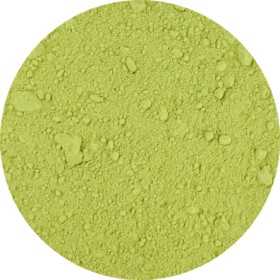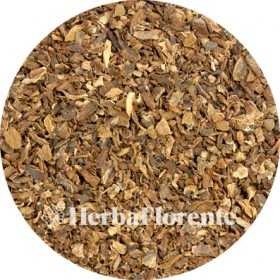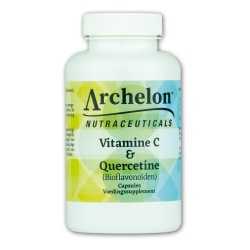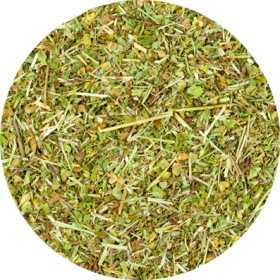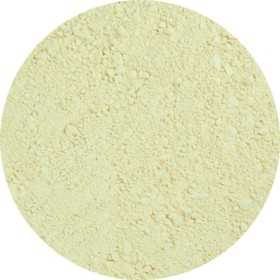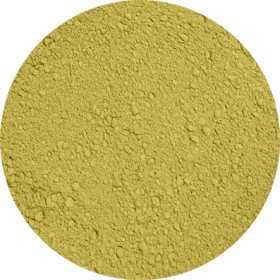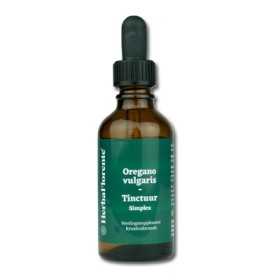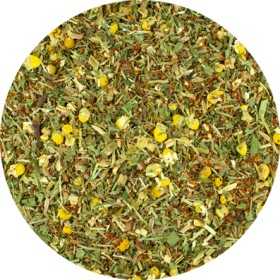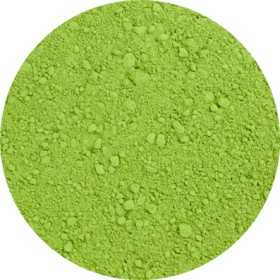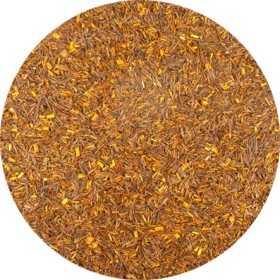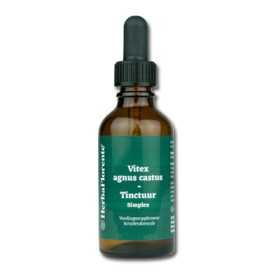Best sellers
There are 392 products.
Dandelion Tincture - Taraxum officinale Tincture
Last items in stock
Single herbal tincture made with dried herb & root of Taraxum officinale (Dandelion).
Dandelion (Taraxacum officinale) has been known for centuries for its ability to support liver and gallbladder function. Both the root and the above-ground parts of the plant are rich in nutrients. In addition, dandelion has a beneficial effect on digestion.
The rich nutritional value of dandelions makes it advisable to regularly pick some fresh leaves in the wild and add them to salads. They are especially tasty in the spring. The fresh yellow flowers can be used as a cheerful decoration in salads and dried they can be processed into a 'wild' herbal tea.
Dandelion (Taraxacum officinale) has been known for centuries for its ability to support liver and gallbladder function. Both the root and the above-ground parts of the plant are rich in nutrients. In addition, dandelion has a beneficial effect on digestion.
The rich nutritional value of dandelions makes it advisable to regularly pick some fresh leaves in the wild and add them to salads. They are especially tasty in the spring. The fresh yellow flowers can be used as a cheerful decoration in salads and dried they can be processed into a 'wild' herbal tea.
€9.95
Eyebright Tincture - Euphrasia officinalis Tincture
Single herbal tincture made with dried herb of Euphrasia officinalis (Eyebright).
The Eyebright (Euphrasia officinalis) belongs to the broomrape family (Orobanchaceae) and mainly thrives in France, with the exception of the Mediterranean region. This plant can also be found in other parts of Europe, such as Germany, Austria and Scotland.
Traditionally, Eyebright was used to treat eye infections, but also for headaches and stomach complaints.
The Eyebright is an annual plant that usually grows between 10 and 25 cm high and is covered with numerous long glandular hairs. From May to September the plant blooms with white flowers that often have a light purple upper lip and a yellow spot on the lower lip.
The Eyebright (Euphrasia officinalis) belongs to the broomrape family (Orobanchaceae) and mainly thrives in France, with the exception of the Mediterranean region. This plant can also be found in other parts of Europe, such as Germany, Austria and Scotland.
Traditionally, Eyebright was used to treat eye infections, but also for headaches and stomach complaints.
The Eyebright is an annual plant that usually grows between 10 and 25 cm high and is covered with numerous long glandular hairs. From May to September the plant blooms with white flowers that often have a light purple upper lip and a yellow spot on the lower lip.
€10.95
Centaury - Centaurium erythraea
Centaury, also known by the scientific name Centaurium (synonym: Erythraea), includes about fifty species of herbaceous plants belonging to the gentian family (Gentianaceae). The genus may have been named after the centaur Chiron from Greek mythology, who was known for his knowledge of medicinal herbs and reportedly treated his wounds with this herb. An alternative explanation for the botanical name is derived from the Latin 'centum' (= one hundred) and 'aurum' (= gold).
In North America, the European centaury is sometimes cultivated as a medicinal plant and has been partly introduced as an exotic plant. The herb contains various bitter substances, glycosides, flavonoids, essential oils, valeric acid and xanthones.
In North America, the European centaury is sometimes cultivated as a medicinal plant and has been partly introduced as an exotic plant. The herb contains various bitter substances, glycosides, flavonoids, essential oils, valeric acid and xanthones.
€2.50
From: €2.50
Black Pepper - Piper nigrum
Pepper is a commonly used spice in cooking, known for its sharp taste. It is obtained from the berries of the tropical pepper plant, Piper nigrum. The pungency of black peppercorns comes from the component piperine. Pepper comes in different colors, including black, white and green.
It can be used in virtually any dish and enhances the flavor of meat while adding a spicy note to soups and purees. Sometimes pepper is also used in baking products, such as gingerbread, albeit in moderate amounts. Whole peppercorns, dried berries of the pepper plant, are used in some dishes. Although pepper is also available ground, many gourmets prefer freshly ground pepper. In addition, pepper is also often used fresh. In India, pepper is added to the spiciest curry mixtures.
It can be used in virtually any dish and enhances the flavor of meat while adding a spicy note to soups and purees. Sometimes pepper is also used in baking products, such as gingerbread, albeit in moderate amounts. Whole peppercorns, dried berries of the pepper plant, are used in some dishes. Although pepper is also available ground, many gourmets prefer freshly ground pepper. In addition, pepper is also often used fresh. In India, pepper is added to the spiciest curry mixtures.
€3.00
From: €3.00
Herb Royal - Artemisia abrotani
Herb Royal (Artemisia abrotanum) is a bushy shrub belonging to the composite family. The plant is originally native to southern Europe, but has been introduced to much more northern areas of Europe.
Historically, the Germanic people used Herb Royal to ward off druids and witches. The Romans made the perfume Abrotenum from it. In addition to its use as a perfume, lemon herb was also used to clean and deodorize wounds, treat cramps and asthma, and as a soothing balm.
Historically, the Germanic people used Herb Royal to ward off druids and witches. The Romans made the perfume Abrotenum from it. In addition to its use as a perfume, lemon herb was also used to clean and deodorize wounds, treat cramps and asthma, and as a soothing balm.
€2.40
From: €2.40
Aniseed - Anisi Vulgaris (Pimpinella anisum)
Anise seed has a naturally sweet, warm taste reminiscent of licorice. It is a versatile seasoning that can be used in both sweet and savory dishes. All over the world, anise seed is used in confectionery, and it is also often added to liqueurs, such as Ouzo.
You can add anise seeds to bread, pastries, cookies, fruit and gingerbread. In Indian cuisine, anise is indispensable in curries and fish dishes, and it gives a delicious flavor to vegetables such as pumpkin and carrot. In the Netherlands it is a tradition to use anise seed on rusk with mice at birth.
Anise seed tea can help with a feeling of heaviness after meals, because it has a soothing and relaxing effect.
You can add anise seeds to bread, pastries, cookies, fruit and gingerbread. In Indian cuisine, anise is indispensable in curries and fish dishes, and it gives a delicious flavor to vegetables such as pumpkin and carrot. In the Netherlands it is a tradition to use anise seed on rusk with mice at birth.
Anise seed tea can help with a feeling of heaviness after meals, because it has a soothing and relaxing effect.
€2.80
From: €2.80
Field Horsetail - Equisetum arvense
Horsetail (Equisetum arvense), also known as horsetail because of its appearance, belongs to the horsetail family. It is known for its supportive properties for the skin, hair and nails, and it provides benefits for the liver and blood vessels. Horsetail extract has a natural calming effect and promotes a healthy moisture balance.
This plant thrives in different environments, such as meadows, along roads, on waste land and on slopes. Horsetail is one of the oldest plant species on earth, having existed for 390 million years. Thanks to its deep roots, horsetail can extract minerals from the depths of the earth. That is why horsetail is packed with valuable substances, including minerals, fiber and silicon.
This plant thrives in different environments, such as meadows, along roads, on waste land and on slopes. Horsetail is one of the oldest plant species on earth, having existed for 390 million years. Thanks to its deep roots, horsetail can extract minerals from the depths of the earth. That is why horsetail is packed with valuable substances, including minerals, fiber and silicon.
€4.75
From: €4.75
Ribwort Plantain - Plantaginis lanceolata
Ribwort Plantain (Plantago lanceolata) is a native plant that thrives in Europe, parts of Asia, North Africa and North America. The young leaves of this plant contain a rich mix of beneficial substances, including mucilages, tannins, bitter substances, flavonoids and minerals such as potassium and zinc. Best known for its soothing effect on the throat thanks to its mucilages, plantain also provides support for the immune system and promotes normal intestinal function. In addition, it can help maintain flexible joints and is beneficial for the liver.
€2.40
From: €2.40
Barley grass - Hordeum vulgare
Barley grass (Hordeum vulgare) is obtained by allowing barley to fully germinate and then cutting off the green shoots when they reach a height of 20 to 30 cm. This grass is known for its high nutrient density. It is packed with bioflavonoids, beta-carotene and a wide range of vitamins, including A, B1, B2, B3, B6, B12, C, E and K. In addition, barley grass contains minerals such as calcium, phosphorus, potassium, iron and zinc. Barley grass powder is also a rich source of chlorophyll and contains all essential amino acids.
€2.60
From: €2.60
Berk - Betula pendula Roth, Betulae (Leaf Grounded)
Birch (Betula) has been valued for centuries for its beneficial properties, thanks to the presence of bioactive substances. In the past it was even considered a sacred tree. In the spring, just before the tree sprouts, birch sap is tapped because that is when the sap flow is strongest. This juice is full of phytonutrients, minerals and vitamins. The young leaves are then collected, because they also contain a high content of various beneficial substances during this period.
Birch leaf is rich in flavonoids, saponins and tannins. The saponins and tannins are responsible for the diuretic properties of the birch.
Birch leaf is rich in flavonoids, saponins and tannins. The saponins and tannins are responsible for the diuretic properties of the birch.
€2.10
From: €2.10
Vlezige Hokjespeul (Astragalus) - Astragalus chinensis membranus
Astragalus, also known as Fleshy Locust (Astragalus membranaceus), is a plant native to Asia. It has been used for 2000 years in traditional Chinese herbal medicine to strengthen the immune system. In addition to this property, astragalus has many other benefits. According to Chinese tradition, it strengthens the life force, or 'qi', as it is called in China, when ingested. It is known as a powerful antioxidant and is especially valued for its ability to support the immune system.
€2.90
From: €2.90
Geranium - Pelargonium sidoides - Cut
The Cape geranium, also known as Pelargonium sidoides, is a South African geranium species that has been part of indigenous herbal lore for centuries. The locals call it 'umckaloabo'. This plant thrives in the wild among tall grass and aromatic flower beds on the slopes of the Cape coast. It has soft, velvety gray-green leaves and deep magenta-colored flowers. The dried and ground rhizomes are dark red in color. They have a soothing effect on the airways and are therefore suitable for providing support for airway problems.
€4.40
From: €4.40
Vitamin C & Quercetin (Bioflavonoids)
The pure form of vitamin C is ascorbic acid. The buffered forms of ascorbic acid are generally better tolerated by humans than the pure form. Ascorbic acid is acidic and the buffered forms give virtually no gastrointestinal problems. Vitamin C is an essential vitamin for the body. It is involved in many processes in the body, including immune system, blood vessels, bones, cartilage, gums, teeth, skin, energy metabolism, nervous system and fatigue.
Quercetin is a flavonoid, also called bioflavonoid. This natural plant compound is found in various plants, fruits and vegetables. Flavonoids are responsible for the vibrant colors (pigments) in these plants and come in various shades. They play a crucial role in plant metabolism, regulate growth, provide protection against UV light, oxidation.
Quercetin is a flavonoid, also called bioflavonoid. This natural plant compound is found in various plants, fruits and vegetables. Flavonoids are responsible for the vibrant colors (pigments) in these plants and come in various shades. They play a crucial role in plant metabolism, regulate growth, provide protection against UV light, oxidation.
€29.95
Speedwell - Veronica officinalis
Speedwell (Veronica officinalis) is a perennial plant that forms a dense sward and belongs to the plantain family (Plantaginaceae). This plant occurs naturally in Eurasia.
The plant reaches a height of 10-50 cm and has stems that spread horizontally and then grow upwards. The stems are evenly hairy. The leaves, short-stalked, are elliptical or obovate in shape, with slightly toothed or serrate edges.
Male speedwell blooms from May to August with light blue flowers, which are darkly veined and have a size of 6-8 mm. There are also variants of the plant with dark blue, pink or white flowers. The flowers grow in bunches.
The plant reaches a height of 10-50 cm and has stems that spread horizontally and then grow upwards. The stems are evenly hairy. The leaves, short-stalked, are elliptical or obovate in shape, with slightly toothed or serrate edges.
Male speedwell blooms from May to August with light blue flowers, which are darkly veined and have a size of 6-8 mm. There are also variants of the plant with dark blue, pink or white flowers. The flowers grow in bunches.
€3.80
From: €3.80
Garlic - Allium sativi
Garlic (Allium sativum) has a beneficial effect on the circulatory system and the liver, while also supporting the immune system and regulating blood sugar levels.
Garlic belongs to the garlic family and produces a leafy, round flower shaft from the bulb in the spring. It is one of the oldest plants in herbalism. Although it is prized for its taste, garlic is also known for its strong smell.
Garlic belongs to the garlic family and produces a leafy, round flower shaft from the bulb in the spring. It is one of the oldest plants in herbalism. Although it is prized for its taste, garlic is also known for its strong smell.
€2.00
From: €2.00
Basil - Basilici
Basil (Ocimum basilicum) is a plant from the Lamiaceae family. The name basil is derived from the Ancient Greek word 'basileus', meaning king, which is also reflected in the alternative name king herb. Basil originally grows in the regions between Central Africa and Southeast Asia.
In some pharmacopoeias and traditional medicine, basil is recommended for the treatment of arthritis, bronchitis, colds, fever, influenza, stomach ulcers, rheumatism, earache, epilepsy, heart disease, malaria, sinusitis, snakebites, abdominal pain and vomiting.
Scientific research has shown that basil has antioxidant, antiviral and antimicrobial properties.
In some pharmacopoeias and traditional medicine, basil is recommended for the treatment of arthritis, bronchitis, colds, fever, influenza, stomach ulcers, rheumatism, earache, epilepsy, heart disease, malaria, sinusitis, snakebites, abdominal pain and vomiting.
Scientific research has shown that basil has antioxidant, antiviral and antimicrobial properties.
€2.00
From: €2.00
Oregano Tincture - Oregano vulgaris Tincture
Single herbal tincture made with dried herb of Oregano vulgaris (Oregano).
Oregano (Origanum vulgare) also known as wild marjoram, is a special herb that has been used for thousands of years for its beneficial properties. It supports healthy intestinal flora and promotes digestion. In addition, oregano has benefits for the heart, blood vessels and blood pressure.
Oregano (Origanum vulgare) also known as wild marjoram, is a special herb that has been used for thousands of years for its beneficial properties. It supports healthy intestinal flora and promotes digestion. In addition, oregano has benefits for the heart, blood vessels and blood pressure.
€10.95
Savory Wort - Satureja hortensis
Savory (Satureja) belongs to the lip flower family (Lamiaceae or Labiatae). The scientific name of savory is derived from 'satyr'. During Roman times, savory was mainly used by the followers of Bacchus. They wore it in wreaths in their hair and used it regularly to increase their potency. Although many herbal books do not mention this, savory is one of the oldest remedies for increasing potency.
In ancient times, the Romans were fond of savory sauce, which was made with vinegar and served with fish and meat dishes in the same way as mint sauce. Most cooks had their own recipes for using savory. They used it in stuffings for veal, in sauces for fish and other dishes, and even in sausages and pork pies.
In ancient times, the Romans were fond of savory sauce, which was made with vinegar and served with fish and meat dishes in the same way as mint sauce. Most cooks had their own recipes for using savory. They used it in stuffings for veal, in sauces for fish and other dishes, and even in sausages and pork pies.
€2.00
From: €2.00
Early Morning Herbal Tea
Herbal tea composed of various herbs
Nice for early morning
Nice for early morning
€3.95
Wheatgrass - Triticum aestivum
Wheatgrass is a nutritious source of vitamins A, C and E, calcium, magnesium and iron. It also contains high concentrations of chlorophyll and natural enzymes. The crop even consists of 70% chlorophyll.
€2.00
From: €2.00
Oregano - Origani cetici
Oregano also known as wild marjoram, is a special herb that has been used for thousands of years for its beneficial properties. It supports healthy intestinal flora and promotes digestion. In addition, oregano has benefits for the heart, blood vessels and blood pressure.
The herb belongs to the Lamiaceae family, which also includes rosemary, thyme and mint. Oreganois is particularly rich in carvacrol, which gives it its characteristic spicy and slightly bitter taste. The most vigorous form of oregano grows in Mediterranean mountain areas, thriving on calcareous soil. During the spring, wild oregano blooms and residents go into the mountains to collect these aromatic herbs.
The herb belongs to the Lamiaceae family, which also includes rosemary, thyme and mint. Oreganois is particularly rich in carvacrol, which gives it its characteristic spicy and slightly bitter taste. The most vigorous form of oregano grows in Mediterranean mountain areas, thriving on calcareous soil. During the spring, wild oregano blooms and residents go into the mountains to collect these aromatic herbs.
€3.00
From: €3.00
Rooibos - Aspalathi linearis
Rooibos (Aspalathus linearis) is a plant from the legume family (Leguminosae), which grows naturally as fynbos in the Cederberg region of South Africa. Since around 1930, rooibos has been cultivated for the production of a tea-like drink. The leaves of the plant are picked, crushed and then placed in the sun to oxidize. During this process, rooibos gets its characteristic reddish-brown color.
The name 'rooibos' comes from Afrikaans and is derived from the Dutch 'rood bos'.
The name 'rooibos' comes from Afrikaans and is derived from the Dutch 'rood bos'.
€2.50
From: €2.50
Monk's Pepper Tincture - Vitex agnus castus Tincture
Monk's pepper (Vitex agnus castus L.) grows naturally in countries around the Mediterranean. It is known as monk's pepper or chaste tree berries and is prized as a spice in this region.
Monks who had taken a vow of chastity once used this herb to suppress their physical desires, due to its supposed dampening effect on libido. This explains the Dutch name monk's pepper.
Nowadays, Vitex agnus is especially popular among women who want to support their hormonal system around menstruation or menopause. It can relieve discomfort during menstruation and also helps with menopausal symptoms such as hot flashes, mood swings and irritability. Moreover, vitex agnus contributes to a good mental balance.
Monks who had taken a vow of chastity once used this herb to suppress their physical desires, due to its supposed dampening effect on libido. This explains the Dutch name monk's pepper.
Nowadays, Vitex agnus is especially popular among women who want to support their hormonal system around menstruation or menopause. It can relieve discomfort during menstruation and also helps with menopausal symptoms such as hot flashes, mood swings and irritability. Moreover, vitex agnus contributes to a good mental balance.
€9.95
















